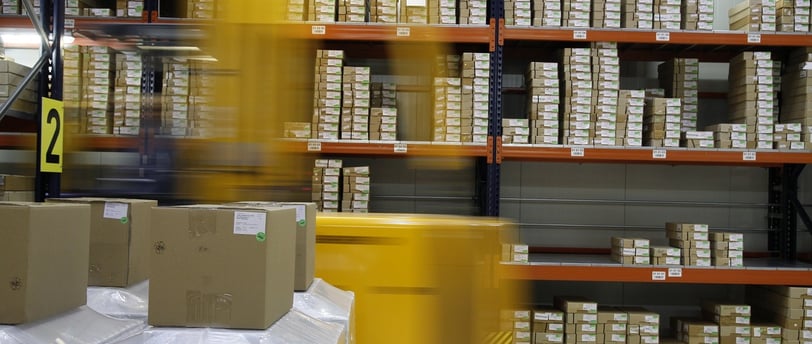Windway Logistics | Logistics and Transportation Solutions
How Digital Twins are Shaping the Future of Logistics
Explore how digital twins are transforming logistics operations by simulating and optimizing processes in real-time.
9/19/20243 min read


Introduction
The logistics sector is experiencing a significant shift, propelled by technological progress, and a particularly thrilling development is the emergence of digital twins in logistics. This advanced technology is transforming how businesses handle their supply chains, enhance operational efficiency, and boost overall productivity. In this piece, we'll delve into how digital twins, in conjunction with logistics simulation and supply chain optimization tools, are shaping the future of logistics.
What Are Digital Twins?
A digital twin is a virtual clone of a physical entity, process, or system. Within the logistics realm, it reflects the entire supply chain, including warehouses, transportation networks, and even specific products. This dynamic, real-time data-based model empowers logistics managers to visualize, simulate, and forecast outcomes, offering crucial insights into the functioning of their logistics network.
By utilizing sensors, IoT devices, and sophisticated analytics, digital twins can gather data from the physical environment and replicate it in a virtual setting. This capability allows logistics companies to experiment with various scenarios, refine processes, and make informed decisions to enhance performance and cut costs.
How Digital Twins Enhance Logistics Operations
1. Supply Chain Optimization
A major advantage of digital twins in logistics is their role in driving supply chain optimization. By creating a real-time digital replica of the supply chain, businesses can pinpoint inefficiencies, streamline operations, and anticipate potential disruptions. This leads to improved inventory management, reduced delivery times, and more effective route planning.
For instance, in the event of a warehouse delay due to unexpected issues, a digital twin can simulate alternative solutions, such as rerouting shipments or adjusting production schedules. This level of adaptability and foresight is vital for sustaining smooth operations in an increasingly complex global supply chain.
2. Logistics Simulation and Risk Management
Through logistics simulation, companies can test various scenarios in a risk-free virtual setting before making real-world changes. Whether it's evaluating the impact of a natural disaster, a sudden increase in demand, or a delay in transportation, digital twins assist logistics teams in preparing for different outcomes.
This predictive feature enables businesses to reduce risks and ensure contingency plans are in place, resulting in more resilient and flexible supply chains. Consequently, companies can improve their response times, minimize the costs associated with delays, and elevate customer satisfaction.
3. Improved Decision-Making
Making decisions based on data is crucial in today's logistics industry. With digital twins, decision-makers have access to real-time data and actionable insights. By analyzing performance indicators, logistics managers can identify bottlenecks, optimize routes, and allocate resources more effectively.
For example, a company might employ a digital twin to assess the performance of its fleet. The technology can highlight underperforming vehicles or routes, allowing the company to make the necessary adjustments. This leads to enhanced fuel efficiency, reduced maintenance expenses, and increased overall productivity.
The Role of Digital Twins in Sustainability
As the logistics industry strives to reduce its carbon footprint, digital twins play a vital role in achieving sustainability goals. By simulating and optimizing routes, companies can reduce fuel consumption and emissions. Additionally, supply chain optimization technology enables businesses to reduce waste, improve packaging processes, and make more informed decisions about resource allocation.
Digital twins also allow companies to monitor their energy usage across warehouses and facilities. By identifying areas where energy consumption is high, businesses can implement more sustainable practices and reduce operational costs.
The Future of Digital Twins in Logistics
The future of digital twins in logistics is promising. As technology advances and more data becomes available, digital twins will become even more powerful and accurate. The integration of AI and machine learning will enable even greater levels of automation, predictive analytics, and optimization.
In the coming years, we can expect digital twins to play an increasingly important role in the evolution of supply chain optimization technology. From real-time tracking of shipments to dynamic route adjustments based on traffic conditions, digital twins will help logistics companies stay competitive in an ever-changing market.
Conclusion
Digital twins are revolutionizing the logistics industry by offering unparalleled visibility, predictive capabilities, and opportunities for supply chain optimization. Through the use of logistics simulation, businesses can enhance decision-making, mitigate risks, and create more sustainable operations. As the technology continues to evolve, digital twins will undoubtedly shape the future of logistics, helping companies improve efficiency, reduce costs, and better serve their customers.
Embrace the future of logistics by integrating digital twins into your operations today. Stay ahead of the competition, optimize your supply chain, and build a more resilient, data-driven business.
Your One-Stop Shop for Logistics Solutions.
Contact
Follow
Support@windwaycentralogistics.com
+2347069986074
© 2024. All rights reserved.
+2347042141892
+233540806857
* Badagry expressway, Alafia Bus stop, behind Oando filling station( Bencord Warehouse),Lagos, Nigeria.
* Atiku Abubakar Hall, Balogun Trade Fair market, Lagos, Nigeria
* Abossey-Okai Mortuary Road, Opposite the Central Mosque, Ghana.


